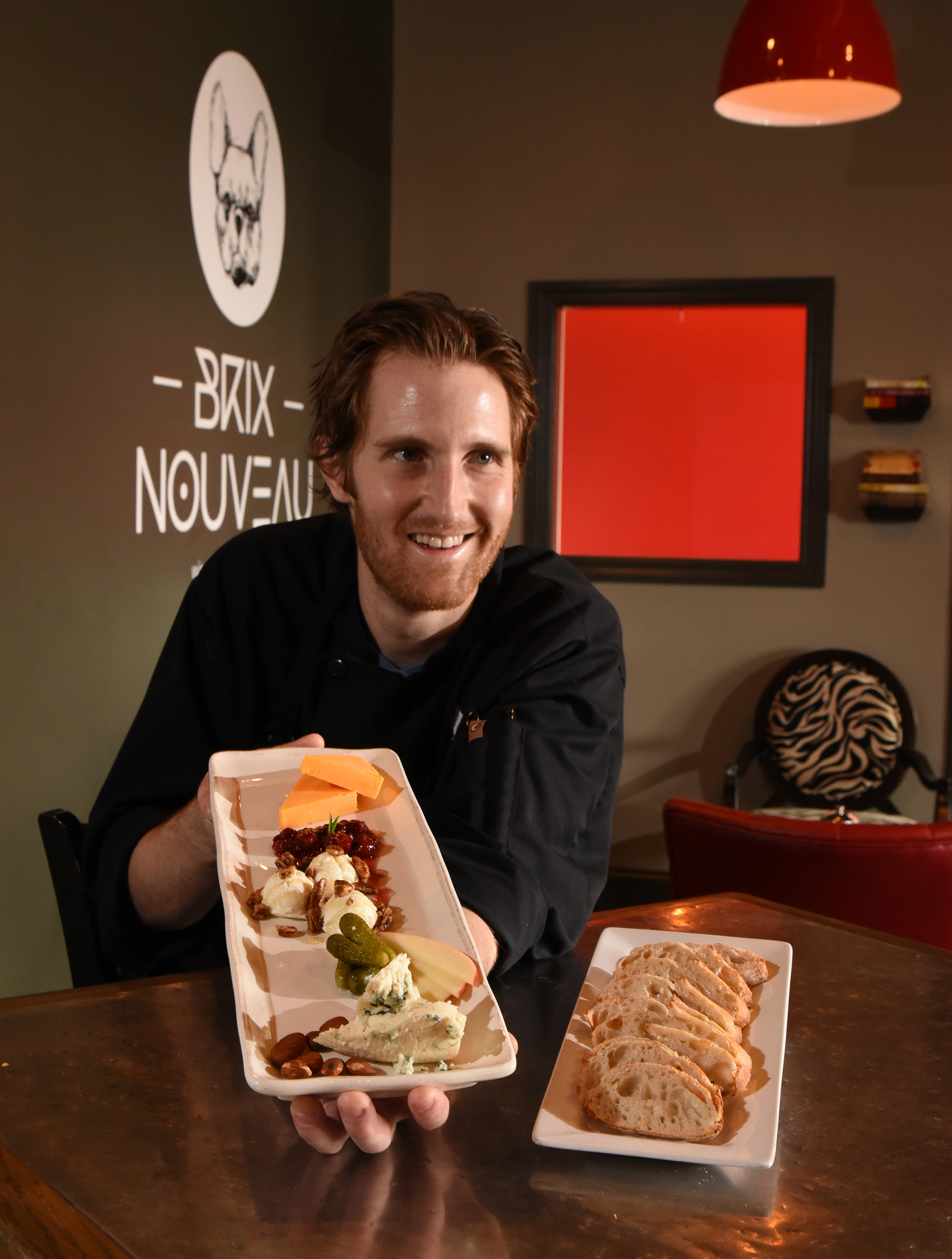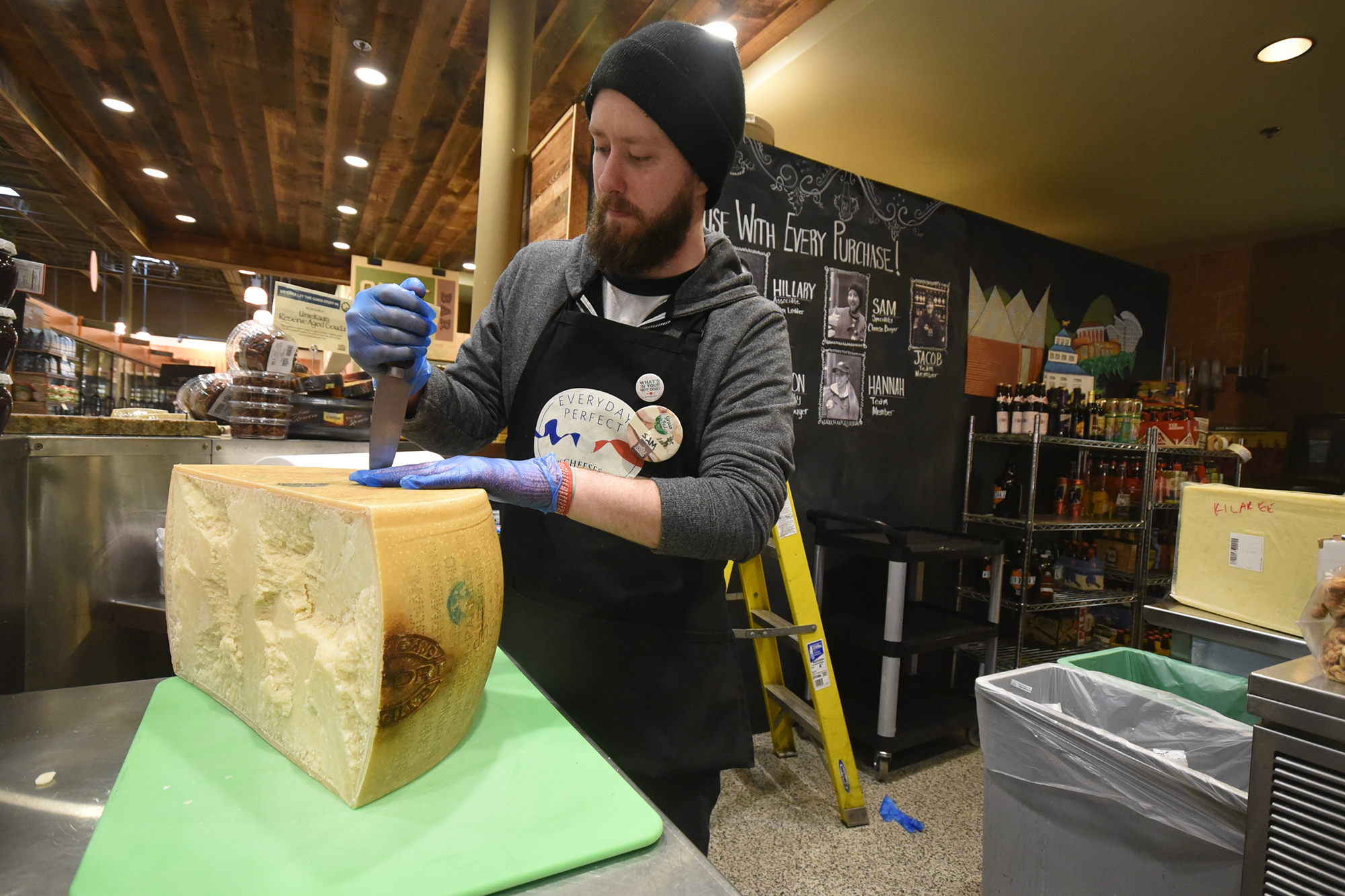Plenty of places on earth have winery tours, but the gorgeous Comte region of France -- think of mountain meadows exploding with wildflowers and ancient fairytale farms and villages -- offers cheese tours.
American Cheese Trends
* The most popular cheese recipe is the United States is "macaroni and cheese." * Total U.S. per capita consumption of natural cheese hit a record 33.7 pounds in 2013. * In 2013, per capita consumption of processed cheese products (i.e., Velveeta, most packaged cheese slices labeled American) was the lowest since 1974. Source: International Dairy Foods Association
Visitors can stroll through farms where Comte cows dine on wildflowers and grass. They can visit a medieval fortress with stone walls three feet thick and a dungeon that now serves as a cold, dim cave where 100,000 huge wheels of Comte cheese are stored while they age, sometimes for as long as four years.
The region, which is on the French-Swiss border in the Jura Mountains, is dotted with restaurants run by superstar chefs who showcase the brown-buttery, nutty and somewhat sweet taste of Comte cheese in their recipes. Even the McDonald's scattered across Paris serve a slice of Comte on their burgers.
But if the price of one of those tours is too steep -- it costs about $1,300 round-trip just for airfare -- there are chunks of Comte sitting in Fresh Market and Whole Foods, ready for Chattanoogans to try.
"I wonder why people stop at cheddar when they could try this," says Joe Van Meese, who holds the intriguing job title of cheese team leader in Chattanooga's Whole Foods. He grabs what looks like a tiny wedge of fudge pie with a faint scent of brown butter and Vermont wildflowers.
"Jasper Hill Farm Landaff," he explains. "There's a whole world beyond cheddar."
So Velveeta is fine for days when you're craving a childhood comfort food like mac & cheese or a grilled cheese sandwich. But instead of Velveeta (OK, technically not a real cheese), try grilling a decadent slice of aged cheese on Italian bread or a baguette; you might feel optimistic and energized as well as comforted.
But venturing into the world of cheese can be daunting -- and potentially expensive -- for those whose knowledge ends in with cheddar, Swiss, mozzarella or good ol' American.
Van Meese suggests a first-time cheese explorer try the Yodeling Goat, which is as pale as alabaster.
"It is very mild and slightly tangy, yet there's no gaminess, which is what turns some people off of goat and sheep's milk cheese," Van Meese says.
"One of our best sellers is this Parmesan Reggiano," he continues, picking up a chunk of cheese so aged it looks like golden quartz, "and Mammoth Cheddar, which sometimes arrives at the store in a 1,000-pound wheel."
Cheese Wars
Dallas-based Dean Foods Co., owner of Land O'Lakes, Horizon Organic, Mayfield and other brands, and Kansas City-based Dairy Farmers of America dominate the U.S. dairy industry to the point that several family dairy farmers, including Sweetwater Valley Farm's John Harrison of Philadelphia, Tenn., filed a 2007 lawsuit against Dairy Farmers of America, alleging that the huge cooperative had cut a deal with Dean to eliminate competition. Dairy Farmers settled the suit in 2012 by paying $140 million to the plaintiffs with no admission of wrongdoing. The Department of Justice filed a 2010 antitrust lawsuit against Dean Foods which was settled in 2011.
On Cherokee Boulevard, Brix Nouveau is a friendly, festive wine bar that serves tapas-style dishes, including the popular cheese plates that Chef Michael Galloway creates.
"Remember: a serving of cheese is usually considered one and a half ounces," he says. "Normally, I include an aged cheddar and a blue cheese on a platter because those flavors are within most people's comfort zones."
His favorite snack hack, which includes blue cheese, has been a big hit with his customers. He soaks dried dates in water until they are plump and juicy, then tosses them into the food processor with caramelized onions, crumbled bacon, mint, basil and olive oil. Puree it all into a date paste. Spread blue cheese onto a slice of crispy baguette, then add a layer of Galloway's date paste on top. Sprinkle with candied pecans.
The result takes a couple of minutes to make and is rich and delicious, whether a diner is craving sweet or salty.
Galloway always chats with a customer a bit before creating a cheese platter to figure out the person's preferences in texture and sweetness and also what flavors they truly dislike. If you want to host a wine-and-cheese party at your home without busting a budget on pricey gourmet cheeses, you can do so without talking to all the guests beforehand to discover their likes and dislikes.
"If you splurge on a couple of gourmet cheeses, just buy a hunk of each and allow people to cut a bit off for themselves," Galloway says. "I include breads, olives, cornichons (tiny pickles), cherry-strawberry preserves I make myself and other condiments on the platter, so guests can experiment with different pairings."
He also suggests tracking down locally made artisan cheeses, which are usually easy to find in local groceries or to buy directly from the maker.
And it just so happens there is a local cheesemaker that has been winning national awards for its artisan cheeses.
Sequatchie Cove Creamery officially began marketing its cheese in 2010 and, in the years since has been picking up national attention. Just last week, it won Best in Show prize for its Shakerag Blue in the 2015 U.S. Championship Cheese Contest held in Wisconsin. Judges gave Shakerag a 99.25 in a competition where the perfect score is 100.
Why aren't the cheese-Loving french gassy and fat?
Studies have found that the French avoid processed foods, which usually are high in fat, and also aren't mindless snackers, which often means reaching for handfuls of fat-filled food. And the aged cheeses loved by the French are low in lactose. Cottage cheese, ricotta, milk and yogurt have high amounts of lactose, 5 to 8 grams. Aged cheeses such as blue, cheddar, Colby, Swiss, Parmesan, Comte, Gruyere are on the low lactose list with zero to 2 grams.
"Family-owned dairies will never survive by selling milk alone," Sequatchie Cove Creamery co-owner Padgett Arnold says, "but they can survive and quite possibly thrive by offering a value-added product like artisan-made cheese. Americans want these special cheeses that have a family identity and a great story attached."
The creamery's Shakerag Blue is wrapped in locally grown fig leaves that have been soaked in Southern whiskey and the blue-veined cheese has hints of bacon and root beer in the flavor. Arnold suggests spreading it on raisin toast for a sweet treat or crumbling it on steaks or salads.
Sequatchie Cove's Dancing Fern cheese also has won prizes, including a 2014 Good Food Awards Winner and a first place in the American Cheese Society's Farmstead Soft category in 2012.
"The sweet grass and wildflowers natural to this part of Tennessee give our milk and our cheese a unique taste," Arnold says. "It's what winemakers call 'terroir.' Every farmstead cheese has a particular taste depending on how the cows are fed and cared for.
"We constantly plant special grasses for our cows to eat so they will have fresh forage instead of manufactured feed all year round. Wildflowers cover the pasture here and the cows love eating them."
Contact Lynda Edwards at ledwards@timesfreepress.com or 423-757-6391.



